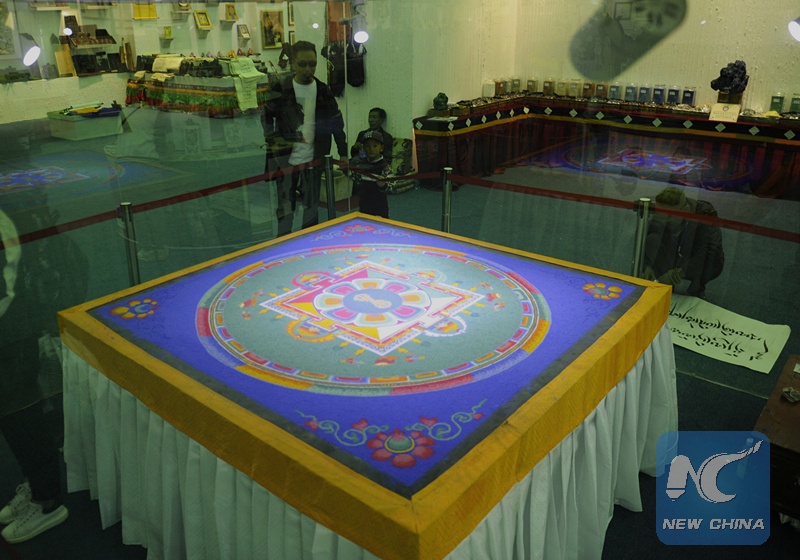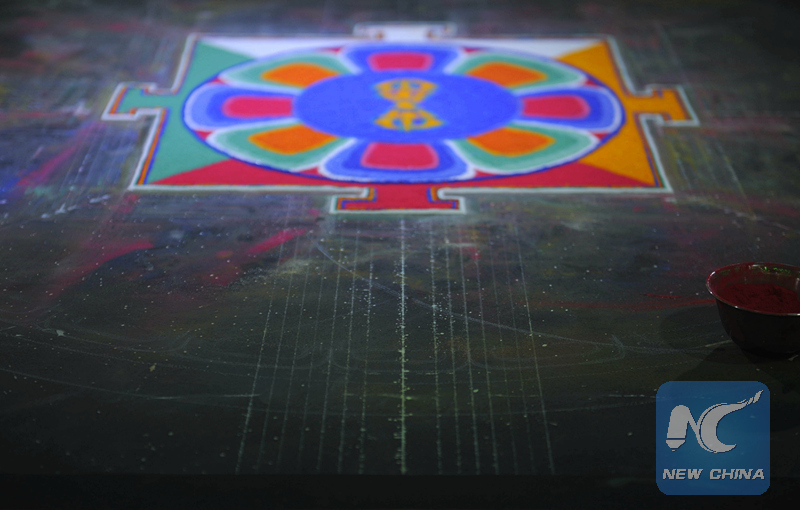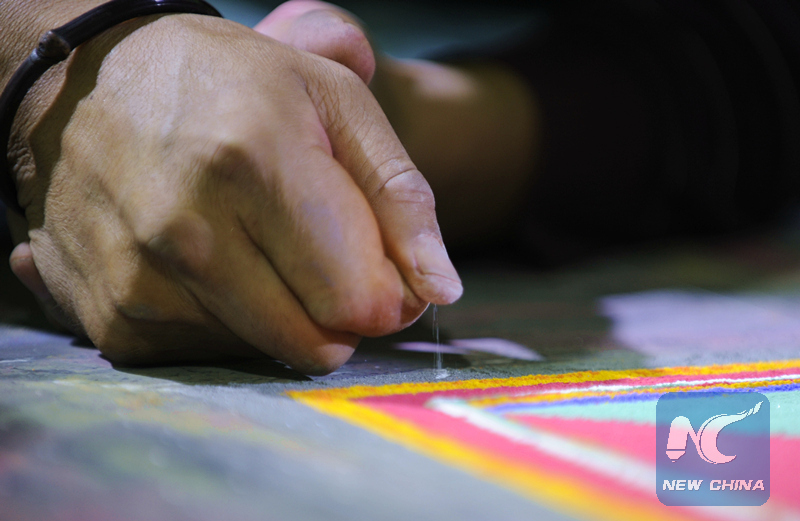
Khedtrup Gyatso works on a sand mandala. (Xinhua/Jigme Dorje)
BEIJING, Sept. 23 (Xinhua) -- It takes weeks -- or even months -- to lay millions of sand grains to create sacred patterns. Then they will be destroyed. At the heart of the process of creation and destruction dwell the transcendental ideas of Tibetan Buddhism.
Originating from esoteric Buddhism in ancient India, the sand mandala is now an important part of the thousand-year-old Tibetan Buddhist tradition.

A Tibetan sand mandala on display in southwest China's Tibet Autonomous Region. (Xinhua/Jigme Dorje)
The mandala -- known in Tibetan as "dul-tson-kyil-khor" -- is created from colored powders made from crushed minerals. The complex patterns are a visual representation of the enlightened mind of the Buddha.

The colored powders for making Tibetan sand mandala. (Xinhua/Jigme Dorje)
The art is exclusively practiced by monks and the skills are passed on according to strict rules. The design of the sand mandala and the shape of its platform might differ, but the sacred artwork is always made by hand.
Khedtrup Gyatso, 48, is a seasoned sand mandala artist. He began to learn the skills of Tibetan Buddhist painting and sand mandalas when he was 17, two years after he became a monk.

Sand mandala artist Khedtrup Gyatso at work. (Xinhua/Jigme Dorje)
To make a sand mandala, an artist first has to draw basic geometric patterns, containing as many as a thousand lines, on a platform. This step alone needs at least half a year of training, says Khedtrup.

Outlines drawn on the platform of the Tibetan sand mandala. (Xinhua/Jigme Dorje)
The artist then holds a small handful of colored powder and gently shakes it down, bit by bit, to fill in patterns, with the help of the lines drawn on the platform.

Sand mandala artist Khedtrup Gyatso fills in the outline of the mandala with colored sand grains. (Xinhua/Jigme Dorje)
Now and then, the artists must check the canons in Tibetan Buddhism to ensure the mandala accords with tradition. So adequate knowledge of Tibetan Buddhism is a must, says Khedtrup.
Once completed, the mandala will be blessed - and then demolished to illustrate the Buddhist idea that one should learn not to get attached to the material world.

